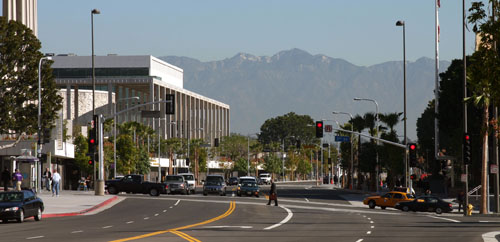A biweekly newsletter with public space news, resources, and opportunities.
A curated dispatch on all things public markets plus the latest announcements from the Market Cities Program.

L.A. County has begun to rewrite the “DNA” of its streets with a new Model Streets Manual that will set guidelines to support improved safety, livability and active transportation options.
This effort was supported through a grant from the Los Angeles County Department of Public Health, through its RENEW initiative. RENEW stands for “Renewing Environments for Nutrition, Exercise and Wellness." It’s inspiring to see a health-focused organization embrace a leadership role in Placemaking by broadening the scope of its concern to include planning for the built environment.
There is a growing understanding that streets configured to support an active lifestyle can lead to positive community health outcomes.
As Streetsblog reports, team lead Ryan Snyder of Ryan Snyder Associates has said the manual is like "the DNA of our streets, and it defines everything from where to place bike lanes to how wide a roundabout should be."
Our Gary Toth and Pippa Brashear joined a team of local and national experts to contribute to this a new Model Streets Manual and each led a chapter in the manual, in addition to contributing to other chapters.
Please Plagiarize While the guide is primarily targeted to the 88 cities that comprise L.A. County, the team hopes the information about making streets for people will reach as many communities as possible: in Snyder’s words, cities can “use it, adopt it, steal it, and plagiarize it.” Toth said the guide was written in such a way that it can provide a base of valuable information that each city can adapt to suit its specific context.
By summer 2011, it will be available for free download on L.A. County’s website.

The Manual has 12 Chapters (here’s a list of them from Streetsblog):
The manual covers a broad range of street design elements at many scales, from land-use to textured surfaces and raised pedestrian crossings. Pippa led the development of the “Re-Placing Streets” chapter and Gary led the development of the Transit Accommodations Chapter.
The rich text element allows you to create and format headings, paragraphs, blockquotes, images, and video all in one place instead of having to add and format them individually. Just double-click and easily create content.
The rich text element allows you to create and format headings, paragraphs, blockquotes, images, and video all in one place instead of having to add and format them individually. Just double-click and easily create content.
Body Text Body Link
The rich text element allows you to create and format headings, paragraphs, blockquotes, images, and video all in one place instead of having to add and format them individually. Just double-click and easily create content.
Here is some highlighted text from the article.




Headings, paragraphs, blockquotes, figures, images, and figure captions can all be styled after a class is added to the rich text element using the "When inside of" nested selector system.
Headings, paragraphs, blockquotes, figures, images, and figure captions can all be styled after a class is added to the rich text element using the "When inside of" nested selector system.
Headings, paragraphs, blockquotes, figures, images, and figure captions can all be styled after a class is added to the rich text element using the "When inside of" nested selector system.

We are committed to access to quality content that advances the placemaking cause—and your support makes that possible. If this article informed, inspired, or helped you, please consider making a quick donation. Every contribution helps!
Project for Public Spaces is a 501(c)(3) tax-exempt organization and your donation is tax-deductible within the guidelines of U.S. law.